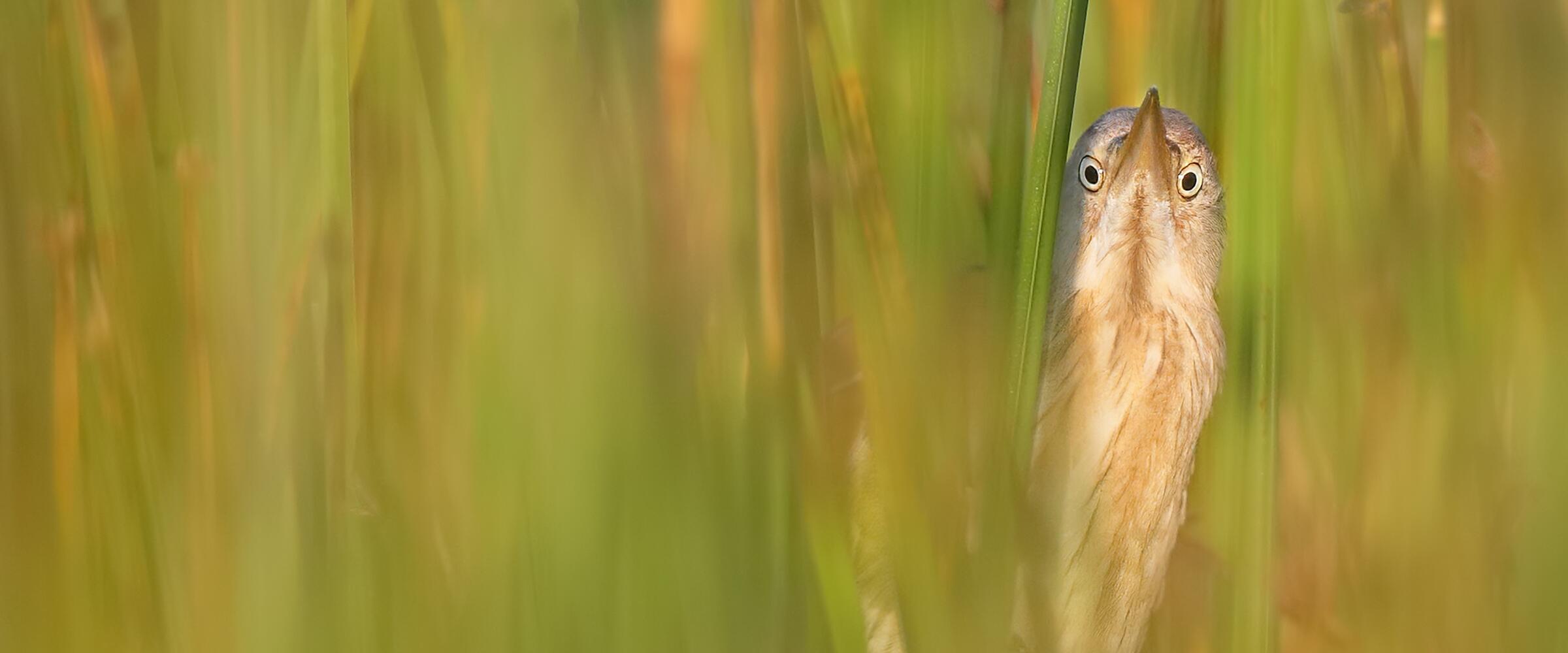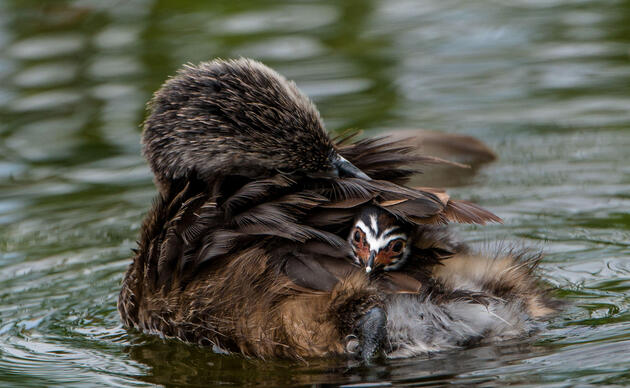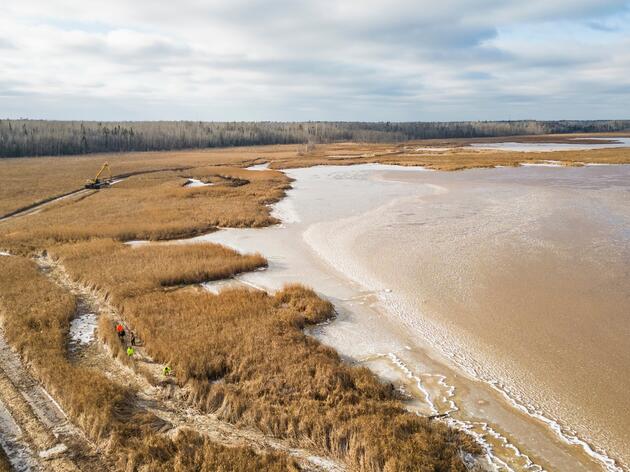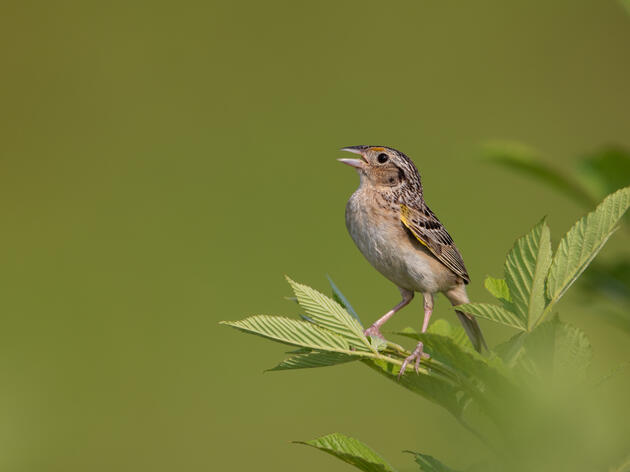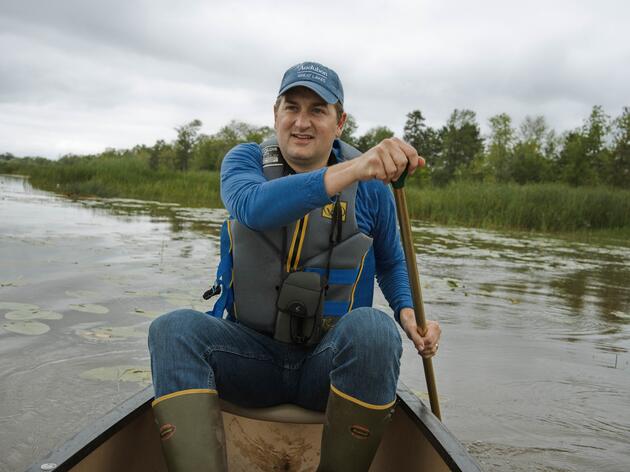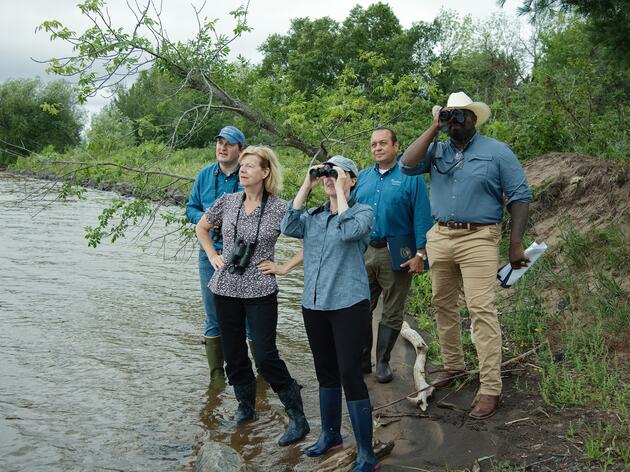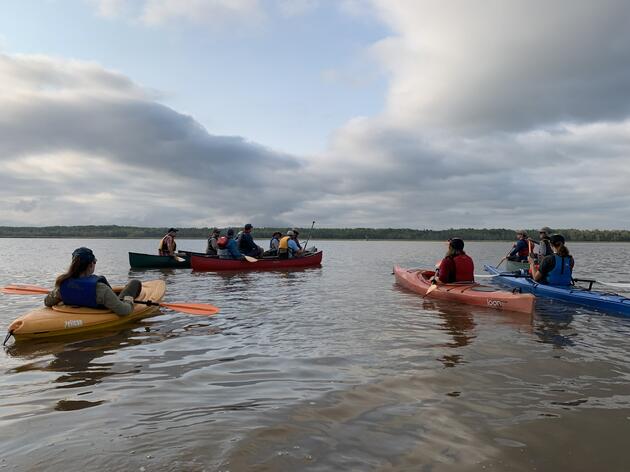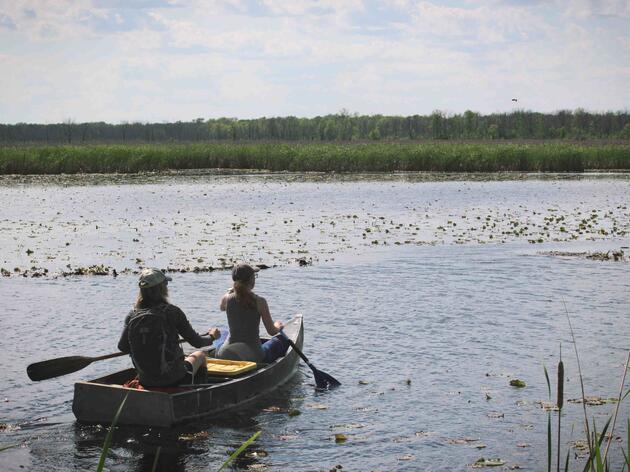Protecting Birds in the St. Louis River Estuary Region
The St. Louis River is the largest tributary of Lake Superior. At the river's mouth, on the border of Wisconsin and Minnesota, is a massive complex of wetlands that provide habitat for migrating waterfowl, shorebirds, and songbirds as well as declining species of breeding marsh birds.
Breeding marsh bird species include American Bittern, Least Bittern, Black Tern, and Yellow-headed Blackbird, all of which are Wisconsin Species of Greatest Conservation Need, depend on a unique habitat complex commonly referred to as hemi-marsh, which has disappeared across the Great Lakes region in parallel with population declines of these species.
Drastically fluctuating lake levels have disrupted the delicate conditions that hemi-marsh habitat needs to thrive in the St. Louis River Estuary region. Now, Audubon Great Lakes is working to improve habitat quality and revitalize breeding marsh bird populations.
Working in the Areas Where Birds Need Us Most
Explore Audubon’s Vision: Restoring the Great Lakes for Birds and People to see Audubon's plans to address the biggest threats facing birds and people.
Our Restoration Work
Audubon Great Lakes is working with partners to coordinate landscape-scale protection and restoration of high-priority coastal wetlands along the entire estuary. This work is focused on the highest- opportunity wetlands where the growth of invasive cattails has led to reduced productivity for birds, such as Allouez Bay. Restoration strategies will protect sensitive areas from climate change impacts and adapt to changing conditions driven by climate change.
History of the Region
The St. Louis River Estuary, an Audubon Important Bird Area in Wisconsin and Minnesota, has suffered from a legacy of industrial pollutants, and was once one of the most polluted waterways in the United States. Despite this, much of the intact marshes remain in relatively high-quality condition, supporting exceptional bird diversity during migration and nesting seasons.
More than 240 bird species have been recorded within the estuary, and its numerous bays, islands, wetlands, barrier beaches, and forested areas provide diverse habitat for breeding birds and birds that are migrating through. Many of these species are facing steep population declines. Black Terns, once common, have not bred in the estuary since the 1990s.
Project Partners & Supporters
Audubon Great Lakes is grateful to project partners and supporters who make our work possible.
Project Partners:
Supporters:
Audubon’s work in St. Louis River Estuary region is supported by the Wisconsin Department of Natural Resources and the Great Lakes Restoration Initiative.

